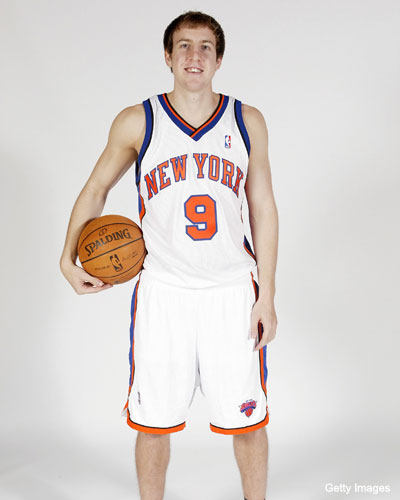 Pro athletes are pampered. From the brightest of stars down to the most anonymous of seat-fillers, pro athletes are allowed to take in on a daily basis what most of us will only get to enjoy for 1 percent of our otherwise-fulfilling lives.
Pro athletes are pampered. From the brightest of stars down to the most anonymous of seat-fillers, pro athletes are allowed to take in on a daily basis what most of us will only get to enjoy for 1 percent of our otherwise-fulfilling lives.
Of course, pro athletes are the 1 percent of 1 percent that are good enough to get to play pro sports for a living. That's sort of the trade-off. Actually, that's the entire trade-off. And if you feel differently, then don't patronize a sports website or television station that carries sporting events for a week. Or a day. Go ahead, slugger.
The real point, as it pertains to the NBA (mired in a lockout over escalating costs and who should do what with ever-rising revenues), is how much this luxury should tax the players, or owners. Who should be footing the bill for this sort of largesse? How much should the owners be obligated to sustain an environment that allows their short-pants artists to create? And how often should that 1 percent of 1 percent, working for team executives that could never dream of emulating such flights of fancy, be asked to pick up the bill? Or chuck in for that night's pregame spread?
While you ponder such things, here's former New York Knicks draft pick (and son of former NBA player and Knicks, Bucks and Wizards personnel boss Ernie Grunfeld) Dan Grunfeld, detailing an NBA life gone so, so smoothly:
When you're on the road in the NBA, you get per diem for food, well over $100 a day.� Sometime on board the plane, someone from the team came around and casually handed me an envelope with like $500 in it.� During my short time with the Knicks, my go-to move was to get to the city we were playing in, buy three or four Subway five-dollar foot longs, put them in my fridge, then pocket the rest of the per diem.� I was a little younger then, but looking back, I still think it was a pretty legit way to go.
When we landed, our luggage was immediately loaded onto the bus for us, so all I had to do was hop on board and ride to the hotel, where I was promptly given a key to my own room. I went upstairs and found exactly what you'd expect in a nice hotel room: cushy bed, flat screen TV, big bathroom. A few minutes after I got up there, my bag was delivered, so I unpacked a couple things, turned on the TV, got into my bed and went to sleep. Our trip to Philly was the same deal: private plane, food everywhere, fancy hotel. And the trip back to New York was on the same plane and -- as you might have guessed -- was also easy and breezy. That's the league for you, and obviously, it's not a bad way to travel, to say the least.� It's true that the NBA road gets lonely, especially with 41 games away from home not counting the preseason or playoffs, but you have to admit, if you're traveling, you might as well travel like that.
The point of Dan's very, very entertaining SB Nation post (which is a must-read, mind you) is to elucidate the differences between the "weary" NBA traveler, and the worrisome international pro basketball player. And how life on the road with a team under the FIBA banner, while well-heeled, is literally and figuratively miles away from life on the road as a member of an NBA squad.
These per diems, though? They involve tangible numbers you can account for. What's harder to account for is the sheer millions that NBA teams spend on getting their 12-15 players from game to game, accounts that don't show up on a team's player payroll.
It's a ton of money, and while this entire lockout is the fault of NBA owners failing to secure a better revenue-sharing system while miserably failing at taking advantage of the payroll-slashing perks afforded by previous collective bargaining agreements, owners would like an answer to the whole "who's payin' for gas?" question.
Can you blame them?
While you figure that one out, go read Dan's post.
Philip Rivers Ales Rodriquez Arizona Diamondbacks Denver Nuggets Washington Redskins
No comments:
Post a Comment